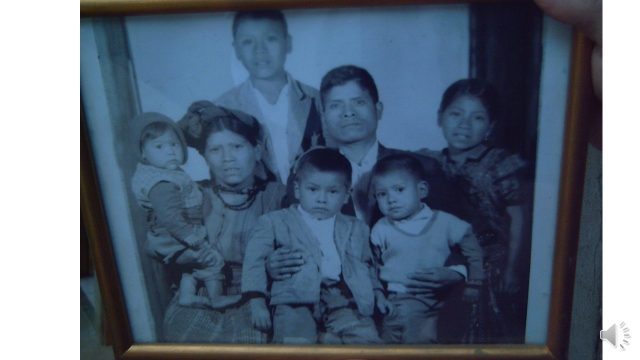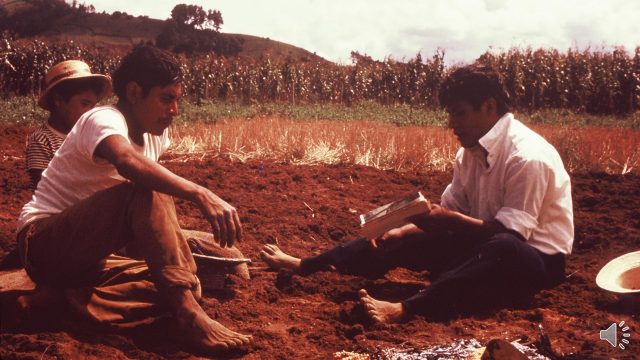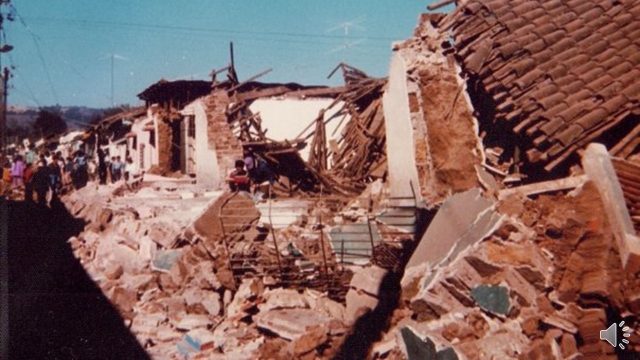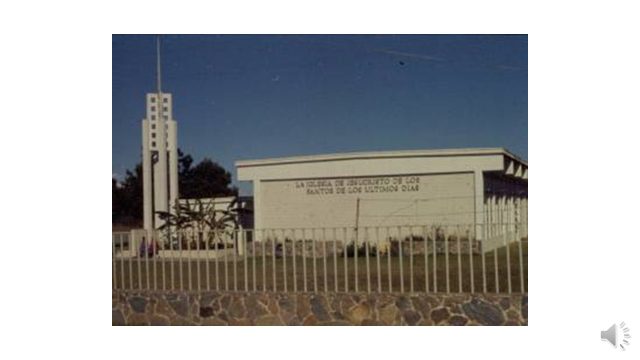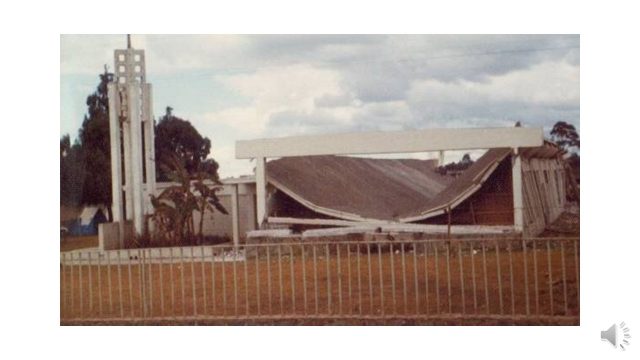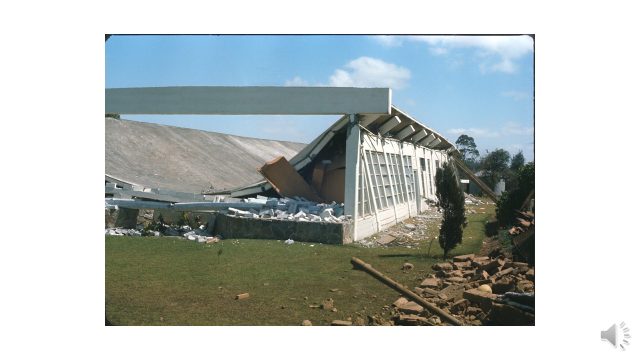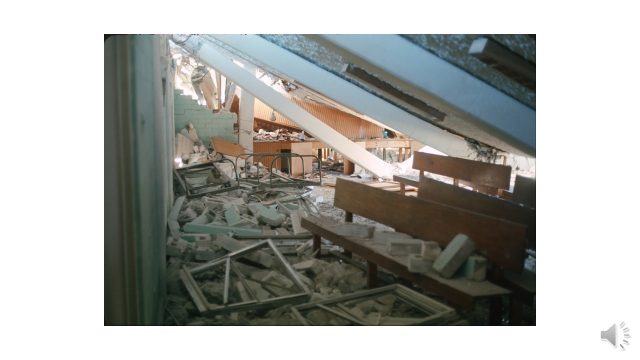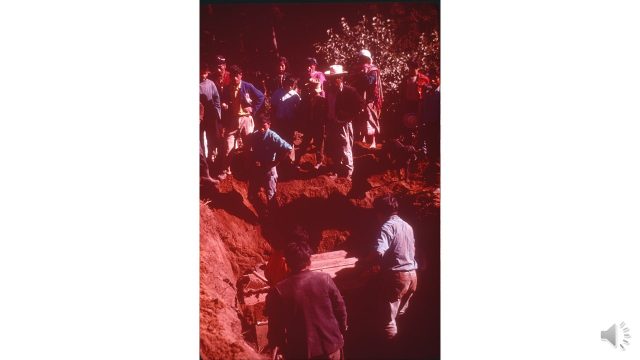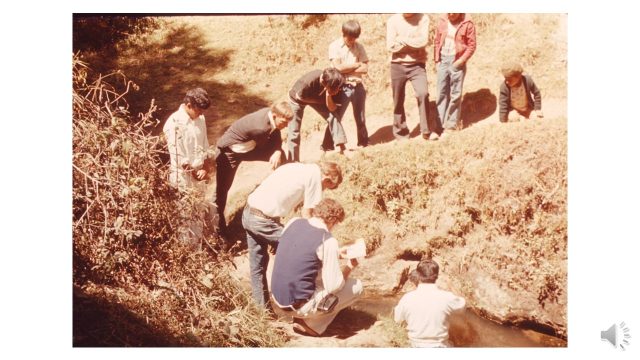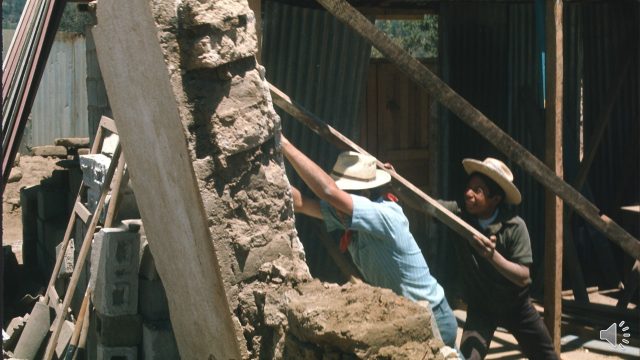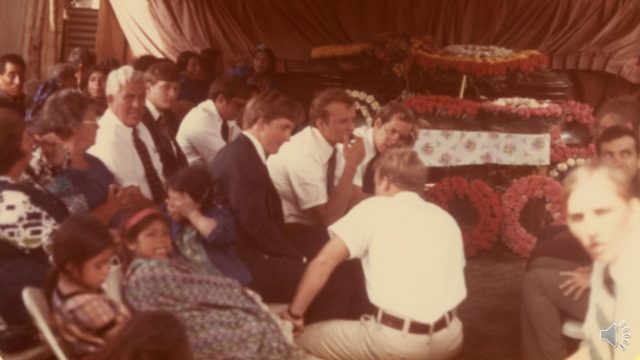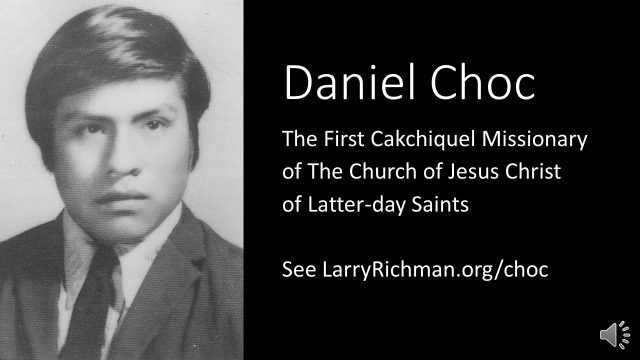Pablo Choc and Daniel Choc
Learn more about the Pablo Choc family:
- Pablo Choc and his family on the Patzicía, Guatemala page.
- “El CID y Ayuda” (also in English, “El CID and Ayuda“) in the global history collection on the Church site.
Pablo Choc joined the Church in 1960, among the first indigenous Cakchiquel people to accept the restored gospel. Within a few short years, he was called as branch president. One of his tasks was to find a place to build a meetinghouse for the rapidly growing branch. He eventually purchased property, and, with supplies provided by the Church, branch members built the first meetinghouse in Patzicía. Choc was employed as the building’s caretaker.
In 1966, Pablo and his wife, Augustina, were sealed in the Mesa Arizona Temple. After serving briefly as the district secretary, he was again called as branch president.
Learn more about Pablo Choc:
- “A ‘David’ in Stature, ‘Goliath’ in Gospel” in the Church News.
- “Un legado de fé y servicio en Patzicía” on the Church’s newsroom page for Guatemala
- “Mi llamamiento me ayudó mucho” (also in English, “My Calling Helped Me a Lot“) in the global history collection on the Church site.
Pablo Choc tells about saving for years for Daniel to go on a full-time mission. He had saved 100-150 quetzals, which was a large sum of money in those days. One day, the military was in town to round up young men as potential recruits for the military. The way they “recruit” is to grab potential young men from the street and take them to the jail where they sort through those they want. Pablo had to give the guards the 100-150 quetzals to get Daniel freed, which left nothing for the mission. Other members and the mission came up with the needed money so Daniel could serve, and missionaries donated clothing for Daniel to use.

Pablo Choc family at Elder Daniel Choc’s missionary farewell, March 12, 1975. See alternate photos 2 and 3
On February 4, 1976, a catastrophic earthquake struck Guatemala. Patzicía was near the center of the devastation. Homes and other buildings throughout the city were leveled. Pablo’s own home collapsed, and his pregnant wife and their two youngest children were killed. After digging out their bodies from the rubble, he was informed that the meetinghouse had collapsed, and a missionary was pinned beneath a massive roof beam.

The remains of Pablo Choc’s home after the quake. All that is standing is the gate amidst the fallen outer wall.
Read how Pablo Choc responded to his duties as branch president on the pages Latter-day Saint Missionaries in the Guatemala Earthquake of 1976 and LDS Missionaries in the Guatemala Earthquake of 1976, Part 2.
Sister Powell wrote: “Our dear Branch President Pablo Choc who lost his wife and two little sons in the quake goes about his duties with a smile on his face. But when we are alone and talking, he says, ‘Oh, Hermana, I miss my wife so much. My home is so sad. I just hope that I can live worthy and work in the church so that I can be with them again. This life isn’t too long. We just have to go on and do the best we can.’ His son, Daniel, the first Cakchiquel Indian to go on a full-time mission came to our tent the other night. He is here with the other missionaries working. He said, ‘I just can’t believe that my mother is dead. It is so sad for me, but it is much sadder for my little sisters. They need her so much.’ But he goes along each day in his missionary work laughing with the other missionaries. Perhaps they don’t know the pain that is in his heart.” (Excerpts from “February 4, 1976: We Were There,” an unpublished account by Gladys Powell.)
President Pablo Choc was an inspiration. Many people, both members of the Church and those who weren’t members, watched Pablo Choc to see how he would respond to these tragedies. His example of strength was an important reason the Church has grown so beautifully in Patzicía. In 1976, there was just one branch in Patzicía, and in 2015, there were four wards and a stake centered in Patzicía.

This is a swatch from a corte that has been in the Pablo Choc family for years. This swatch was prepared by Margaret Blair and given to missionaries who served in Patzicía during a missionary reunion at the Robert Blair home on October 2, 2015.
Pablo Choc died July 28, 2010.
Daniel Choc
In the late 1960s, some former missionaries who had served in Guatemala determined to help alleviate the impact of the abject poverty they had witnessed throughout the country. They purchased a small farm in Valparaiso (near Cobán), where they established elementary and trade schools and built new, clean homes for local people. One of Pablo Choc’s sons, Daniel Choc, was one of many teenagers who came from several areas to the Center for Indian Development (“El Centro Indígena de Desarrollo”), commonly called “El CID,” to learn how to live, work, and have what was called “The Good Life.” Later, Daniel’s siblings, Serapio and Carmela, also worked at El CID.
The following is from the Guatemalan Foundation website:
“One of them from Patzicía, Daniel Choc, learned quickly and was the first to be taught how to operate the new Ford tractor and all its implements. This tractor was actually the first project of the Foundation in 1970. Daniel in the next 2 years taught 26 others, students and full-time employees how to also drive the tractor.
“After 2 years as a student and supervisor at The CID, he returned to his home in Patzicía. It was said in the LDS congregation there, ‘Daniel left here a boy and returned a man.’ He went on to become the first full-time LDS Cakchiquel missionary.
“It was Daniel who replied to the question of how best to help his people, replying, ‘Formalize the program at Valparaiso and give other youth like me a chance to learn how to live and work.’ He is given the credit for naming Valparaiso ‘The Center for Indian Development.’ Between him and Cordell the plan was, after his mission to establish in Patzicía ‘The CID #2,’ with Daniel as administrator, but tragically during his mission he was killed in the aftermath of the 1976 earthquake that killed 23,000 Guatemalans.”
Read the story of Elder Daniel Choc Xicay as a missionary in Comalapa.

Branch president Pablo Choc, his sons Elder Daniel Choc and Austin Choc, and Elder David Frischknecht behind the fallen church in Patzicía after most of the rubble was removed.
Read about Elder Choc’s untimely death after the earthquake in 1976 on the pages Latter-day Saint Missionaries in the Guatemala Earthquake of 1976 and LDS Missionaries in the Guatemala Earthquake of 1976, Part 2.
On October 5, 2018, a “Noble And Great Ones” event was held in Salt Lake City to honor Latter-day Saint missionaries who lost their lives during their time of service. At that event, Larry Richman delivered a tribute to Elder Daniel Choc, the first full-time Latter-day Saint missionary from the town of Patzicía and the Church’s first native Cakchiquel-speaking missionary.
Watch a video tribute to Daniel Choc by Larry Richman in the video below.
Below are the slides and text from the video tribute.
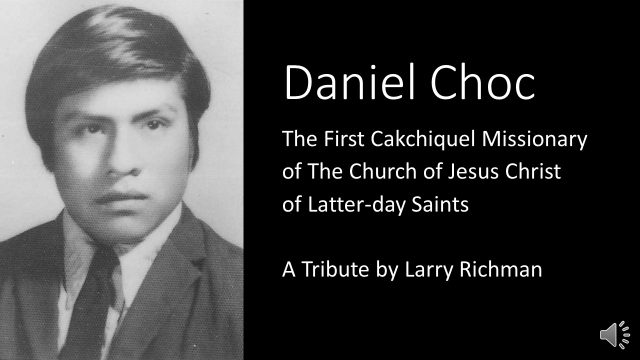
Daniel Choc was born December 11, 1952, in Patzicía, a little town of 5,000 people in the mountains of Guatemala.
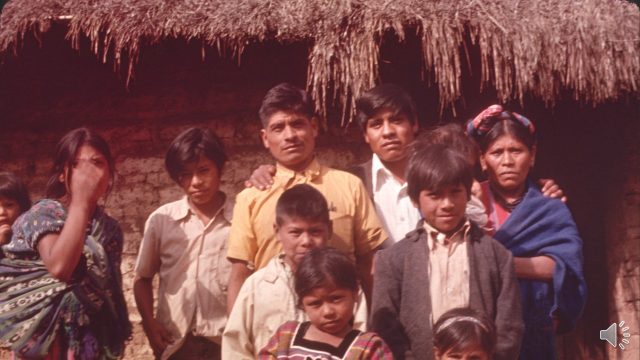
This is a picture of Daniel and his family the day he left on his mission. He was the first missionary to serve from the town of Patzicía, in fact, from any of the Cakchiquel-speaking towns.
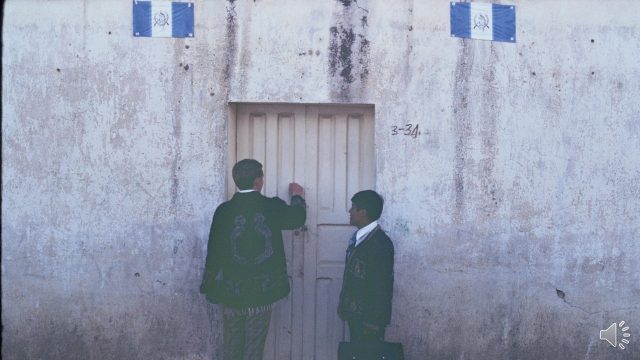
I was Elder Choc’s missionary companion for 5 five weeks in the town of Comalapa. During those 5 weeks, he taught me things that I thought I already knew—like what dedication and commitment are all about. Elder Choc was an especially effective missionary ̶ not only because he was a native speaker of Cakchiquel, but because he was humble, and had a way of explaining the gospel in a simple way that the Spirit could touch the hearts of the people. The most productive day of my entire mission was during those 5 weeks with Elder Choc. We taught 10 discussions that day. As we knocked on doors to find those 10 people to teach, and after being turned away at a door, Elder Choc would often run—not walk—to knock on the next door.
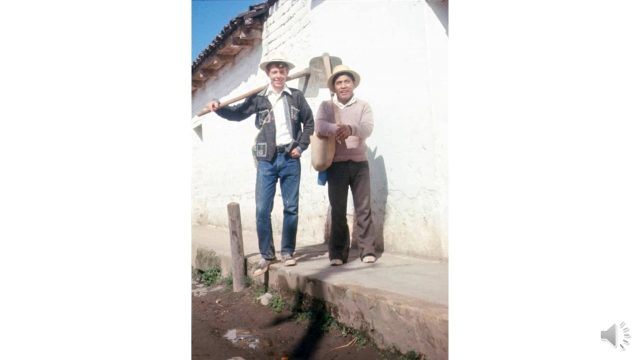
We had a somewhat unorthodox mission. In the Indian towns, all the men would go to work in the fields, and only women and children were at home during the day, so we would follow the men into the fields where we could teach them.
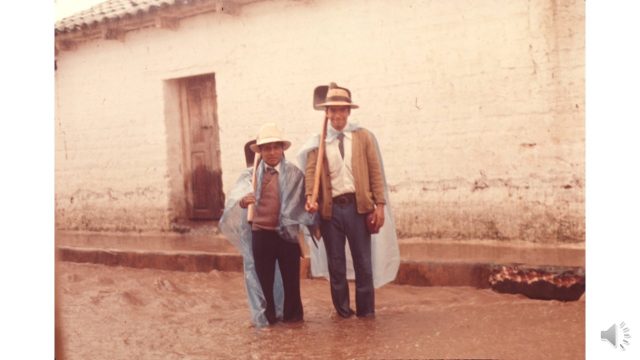
When the rains came, it didn’t stop the work. The people still went to work in the fields, and so did we.
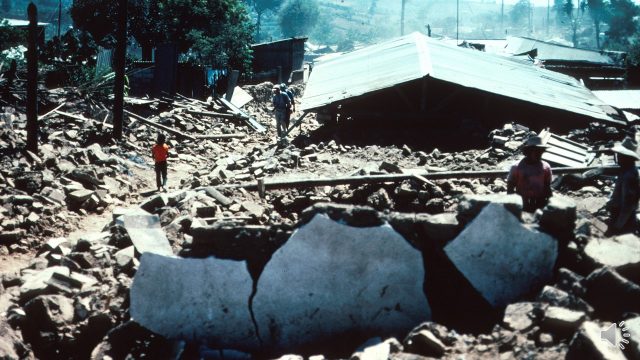
On February 4, 1976, at 3:00am, an earthquake hit Guatemala. The quake measured 7.6 on the Richter scale and lasted 45 seconds. As you can see in this picture, adobe homes became rubble. The earthquake was 90 times stronger than the earthquake that leveled Managua, Nicaragua in 1972. That night, about 25,000 people died, 80,000 were injured, 250,000 homes were destroyed, and nearly 1.5 million people were left without shelter.
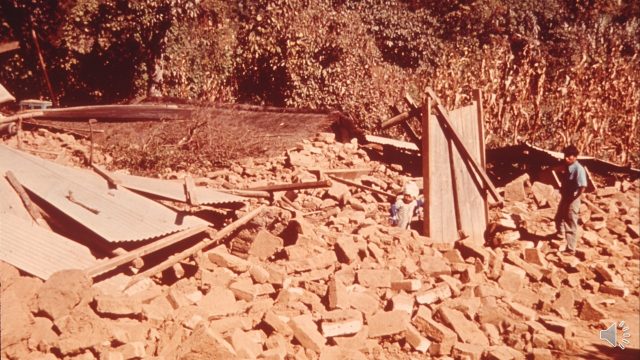
These are the remains of Daniel’s family’s home. The collapsed home killed his mother (who was pregnant at the time) and two of his brothers. Daniel’s father was also the president of the Patzicía Branch. So not only did he have to deal with the death of his wife and three children, he was responsible for the members in the town who also had lost their homes.
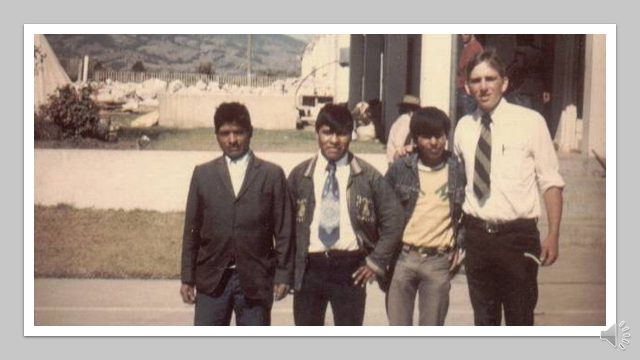
Elder Choc soon returned from the town of Sumpango where he was serving at the time of the earthquake to comfort his father and his remaining family. This is a picture of his father, Pablo Choc on the left, then you see Elder Choc, his younger brother, and another missionary behind the fallen church in Patzicía after most of the rubble was removed.
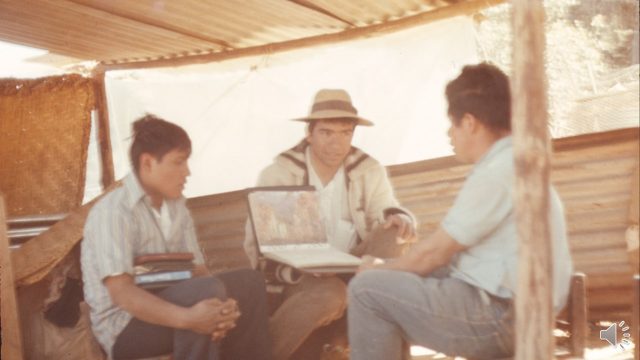
In spite of the fact that Daniel had lost his mother and 3 siblings, he was on a mission. And he was undaunted in his commitment as a missionary. This is a picture taken days after the earthquake. Daniel (on the left) and another elder are teaching the nonmember husband of the Relief Society president who also died in the earthquake.
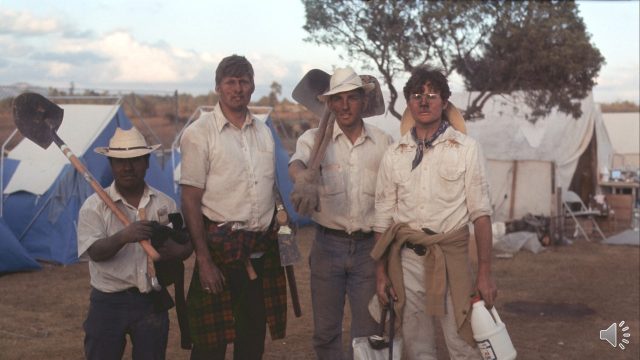
Elder Choc worked alongside the other missionaries for 2 months after the earthquake helping people shovel their way out of all the debris left by the devastating earthquake.
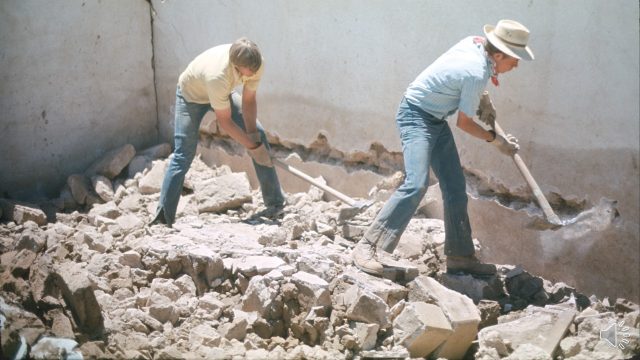
The few walls that remained standing were unsafe and had to be brought down. So we would pick away that the cement coating of the adobe or brick….

Or pull it over. Two months after the earthquake, on March 29, 1976, we were working in the town of Patzún tearing down walls, when a wall similar to this gave way prematurely and fell. Everyone scrambled to safety, except for Elder Choc who was crushed by a four-foot section of brick and cement. A fellow missionary gave him artificial respiration while he was rushed to a nearby school that had been converted into a hospital.
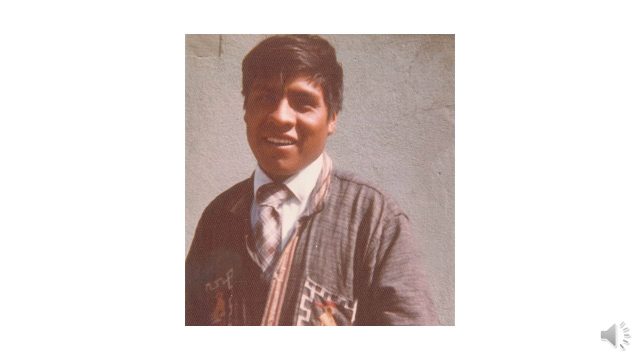
But the Lord soon called him home. We thought we had seen the end of death from the earthquake two months before that, but now it took another life that was dear to us. All we could do was ask ourselves was “Why was it him under that wall and not me?“ In spite of the difficulties he had in his life, Elder Choc was always happy and was a good friend to us. He was also an asset to the mission, being the only native Cakchiquel-speaking missionary. He patiently taught us to understand his people and to speak their language.
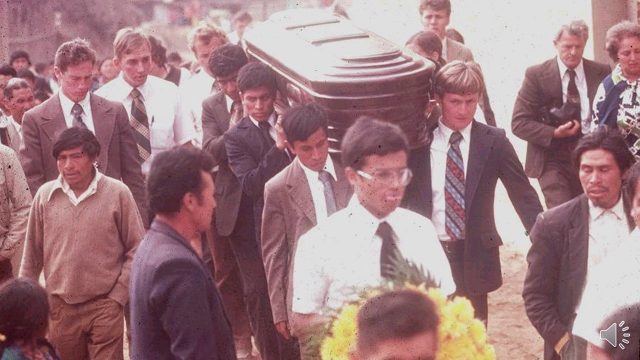
The mission president and I prepared Daniel’s body and placed it in the casket. He was only about 5′ 2″, but he was a giant of a man in my eyes. We left on the lapel of his suit the button he wore which read “Por sacrificio se dan bendiciones” (Blessings come through sacrifice).
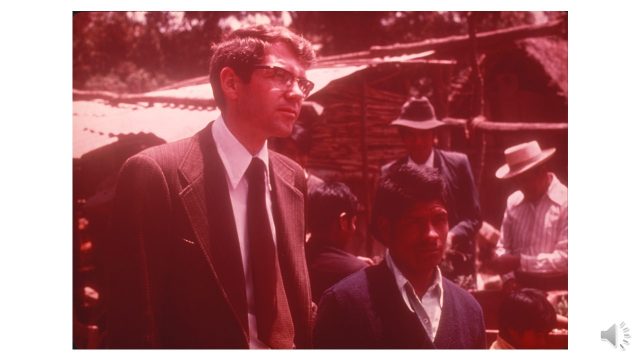
This is a picture of our mission president and Elder Choc’s father, Pablo Choc at the funeral. In his remarks, the mission president said, “I have had the privilege to interview Elder Choc and to know the intimate details of his life. I assure you that Elder Choc left this world completely dedicated and completely pure.” “…I just hope I’m in as good a shape when I die as Elder Choc was.”
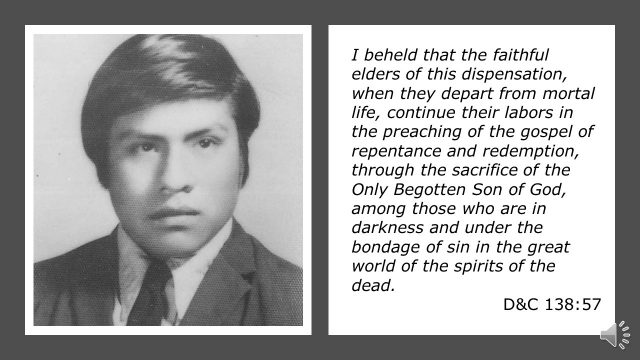
Elder Choc was deserving of two honors. He was the world’s first Cakchiquel missionary, and then he became the first Cakchiquel missionary in the spirit world. In D&C 138:57, we read of the vision given to President Joseph F. Smith about the spirit world: “I beheld that the faithful elders of this dispensation, when they depart from mortal life, continue their labors in the preaching of the gospel of repentance and redemption, through the sacrifice of the Only Begotten Son of God, among those who are in darkness and under the bondage of sin in the great world of the spirits of the dead.”
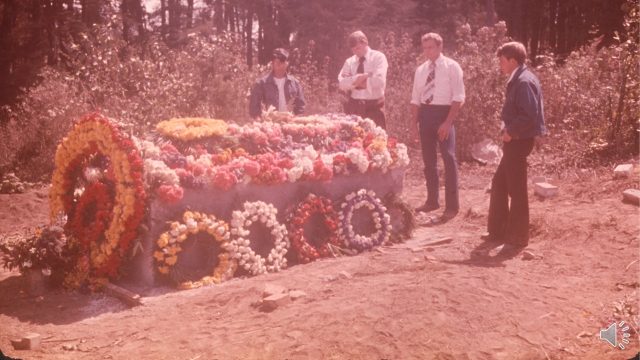
Elder Choc’s casket was placed in a tomb which was built over the grave of his mother, two brothers, and the twelve other members of the branch that we buried two months before that.
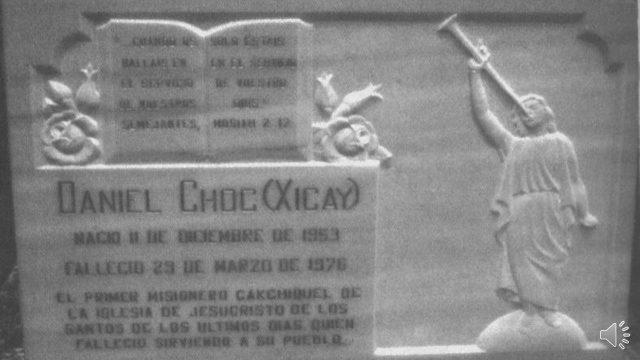
On the front of his tomb is a marble headstone with the following inscription: “When ye are in the service of your fellow beings ye are only in the service of your God. Mosiah 2:17. Daniel Choc (Xicay). Born December 11, 1953. Died March 29, 1976. The first Cakchiquel missionary of The Church of Jesus Christ of Latter-day Saints who died serving his people.”
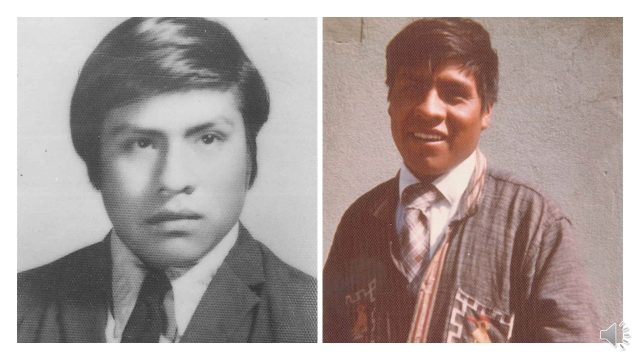
I love you, Elder Choc. I look forward to the day when I cross the veil and meet you again with open arms, and I can have the chance to thank you like I never really did in this life, for your friendship, and for the example you showed me.
“I beheld that the faithful elders of this dispensation, when they depart from mortal life, continue their labors in the preaching of the gospel of repentance and redemption, through the sacrifice of the Only Begotten Son of God, among those who are in darkness and under the bondage of sin in the great world of the spirits of the dead.” (Doctrine and Covenants 138:57)



